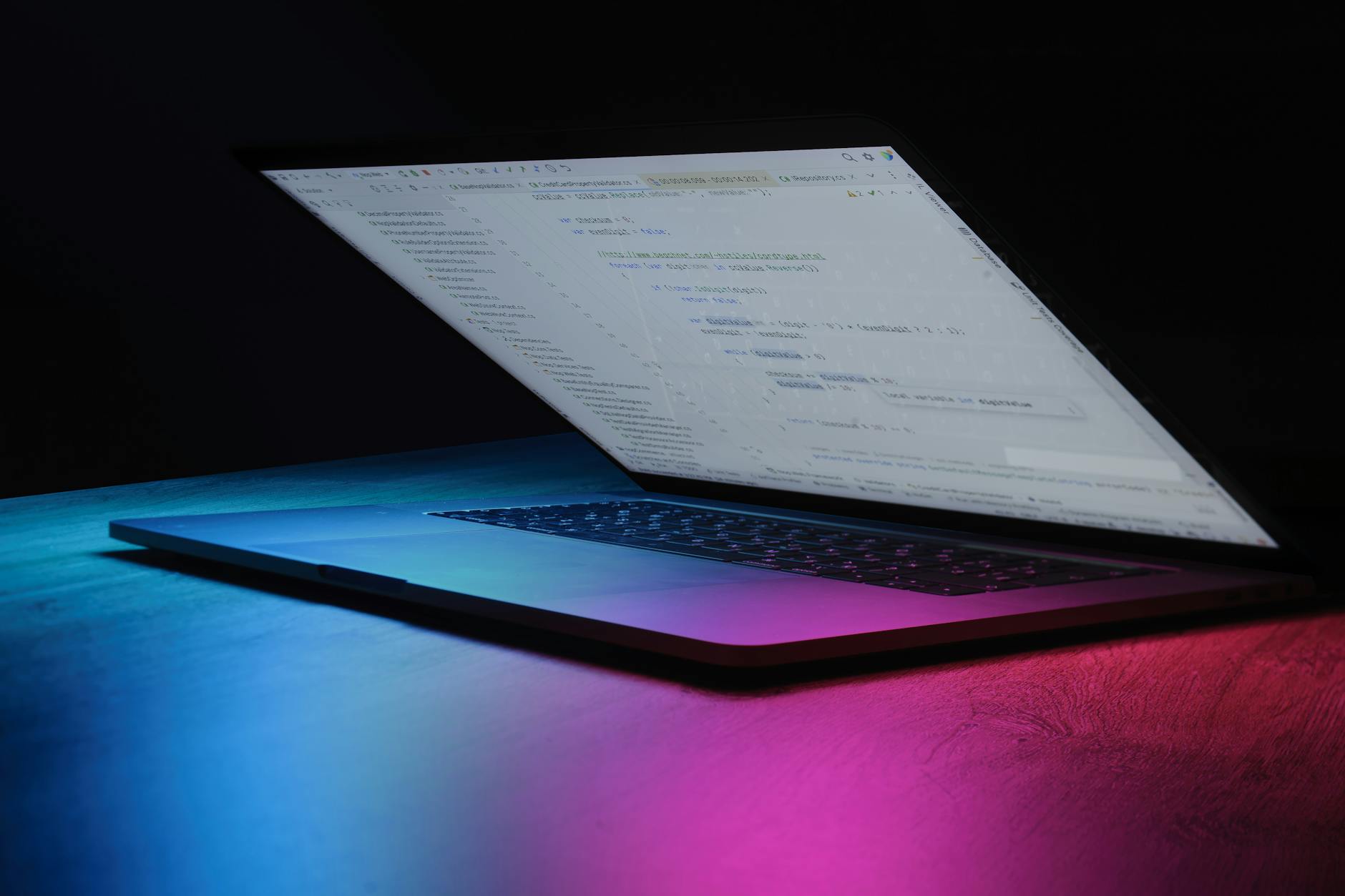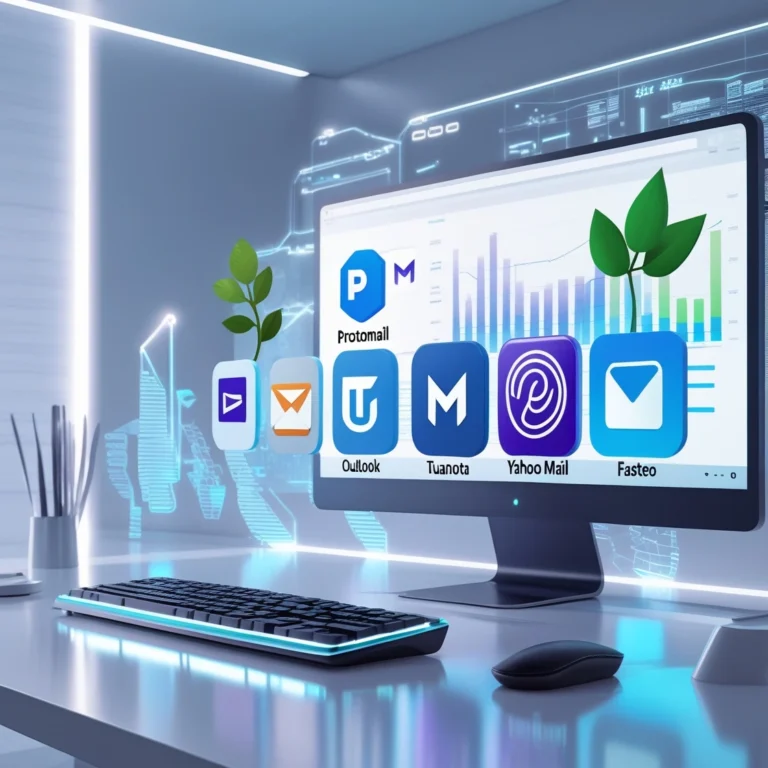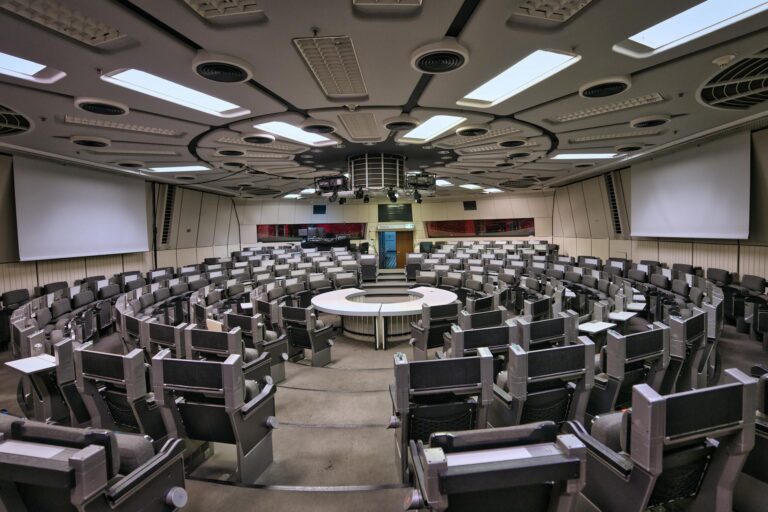2025 Tech Frontier Your Guide to Web Mobile Cloud AI UIUX
The 2025 Tech Frontier: A Comprehensive Playbook for Web, Mobile, Cloud, AI, and UI/UX Innovation
Estimated reading time: 19 minutes
Key Takeaways
- Artificial intelligence is evolving beyond basic automation, becoming a strategic asset for personalization, innovation, and augmenting human capabilities across all business functions.
- Web and mobile development in 2025 prioritize extreme performance, modularity (Next.js, Flutter, headless CMS), and AI-driven user experiences.
- Cloud computing and DevOps practices are central to achieving scalability, efficiency, and automation, with serverless architecture leading the charge for cost-effective, auto-scaling backends.
- Modern UI/UX design focuses on intuitive, inclusive, and immersive experiences through AI-driven personalization, adaptive layouts, AR/VR integration, and ethical considerations.
- Digital transformation is crucial for businesses of all sizes, with affordable and scalable tech solutions empowering small businesses and startups to leverage AI automation and achieve significant growth on a budget.
Table of Contents
- Navigating the Digital Tides of 2025: An Introduction
- The Five Pillars of 2025 Tech Transformation
- Web Development Reinvented: Speed, Intelligence, and Decoupling
- Mobile App Innovation: Intelligence, Cross-Platform Efficiency, and UX Mastery
- The Cloud & DevOps Evolution: Scalability, Automation, and Efficiency
- AI: Beyond Automation – Intelligence, Personalization, and Strategic Impact
- Modern UI/UX Design: Intuitive, Inclusive, and Immersive
- Strategic Digital Transformation: A Holistic Approach
- Empowering Small Businesses & Startups: Innovation on a Budget
- AITechScope’s Role in the 2025 Digital Landscape
- Challenges and Ethical Considerations in 2025 Tech
- Looking Ahead: The Symbiotic Future of Technology
- Conclusion: Your Playbook for the Digital Age
- Frequently Asked Questions (FAQs)
Navigating the Digital Tides of 2025: An Introduction
The digital landscape is in perpetual motion, evolving at an unprecedented pace. As we step into 2025, a new wave of technological advancements is not just altering how businesses operate but fundamentally redefining human-technology interaction. From the intricacies of web development to the expansive reach of mobile applications, the ubiquitous presence of cloud computing, the transformative power of AI automation, and the art of modern UI/UX design—every facet of our digital world is being upgraded, refined, and reimagined.
This comprehensive guide serves as your essential playbook for understanding the pivotal 2025 tech trends. It aims to break down complex innovations into actionable insights, providing a roadmap for businesses, developers, and tech enthusiasts alike. We’ll delve into the future of web development trends, explore the cutting-edge of mobile app development 2025, unravel the complexities of cloud computing and DevOps, illuminate the strategic potential of AI automation for businesses, and highlight the principles behind modern UI/UX design. Whether you’re a startup striving for rapid growth, an established enterprise undergoing digital transformation strategies, or a developer honing your skills, this article will equip you with the knowledge to thrive in an increasingly tech-driven world.
At AITechScope, we specialize in helping businesses harness these very forces. As a leading provider of virtual assistant services, we leverage AI-powered automation and n8n workflow development to optimize business processes, reduce costs, and foster efficiency through intelligent delegation. Our mission is to transform today’s tech into a powerful accelerator for your growth and performance.
The Five Pillars of 2025 Tech Transformation
The technological revolution of 2025 is built upon several foundational pillars, each contributing uniquely to the fabric of our digital future. Understanding these core areas is crucial for anyone looking to stay ahead.
Web Development Reinvented: Speed, Intelligence, and Decoupling
The web is no longer just a collection of static pages; it’s an intelligent, highly responsive, and deeply personalized ecosystem. Web development trends in 2025 prioritize performance, modularity, and the seamless integration of artificial intelligence.
Next-Generation Frontend Frameworks: Performance and Developer Experience
In 2025, frameworks like Next.js and React continue to dominate the frontend landscape, but with an intensified focus on performance and developer efficiency.
Next.js and React Performance: Building Blazing-Fast Experiences
The demand for instant gratification has pushed web performance to the forefront. Next.js and React performance optimization is no longer a luxury but a fundamental requirement. Developers are leveraging server-side rendering (SSR), static site generation (SSG), and incremental static regeneration (ISR) capabilities of Next.js to deliver sites that load in milliseconds. This is particularly vital for fast marketing sites and e-commerce platforms where every second of load time can impact conversion rates.
For Next.js small business site development, the framework offers a compelling blend of speed, SEO benefits, and ease of deployment. It allows small teams to build robust, high-performing websites without extensive infrastructure setup. A Next.js beginner guide often emphasizes its opinionated structure, which streamlines development and helps enforce best practices for performance from the outset. Simple React performance fixes, such as lazy loading components, memoization, and optimizing image delivery, are reducing page load times by seconds, directly impacting user experience and SEO rankings.
The Rise of AI-Powered Web Apps
Artificial intelligence is no longer confined to backend data processing; it’s making its way directly into the user interface. AI-powered web apps in 2025 feature personalized content feeds, intelligent search capabilities, predictive analytics embedded into dashboards, and adaptive UI elements that respond to user behavior. Imagine a retail website that not only recommends products based on past purchases but also dynamically reconfigures its layout based on your current browsing patterns and expressed preferences, powered by on-the-fly AI analysis. This integration makes web experiences significantly more engaging and efficient.
Architectural Shifts: Headless CMS and Micro Frontends
Modern web architecture is moving towards greater flexibility and scalability, driven by the principles of decoupling.
Headless CMS with WordPress: Freedom from Traditional Constraints
The traditional monolithic CMS is giving way to more modular approaches. Headless CMS WordPress is a prime example of this evolution. By separating the content management backend (the “head”) from the presentation layer (the “body”), developers gain unparalleled flexibility. Content can be published to websites, mobile apps, smart displays, and IoT devices simultaneously, all managed from a single WordPress instance. This approach ensures content consistency across platforms, enhances security, and allows developers to use their preferred frontend frameworks like React or Next.js, avoiding the “WordPress bloat” sometimes associated with traditional setups. Lightweight plugins and optimized configurations ensure excellent SEO without compromising performance.
Microservices Architecture and Micro Frontends: Scalability and Agility
Microservices architecture has become a cornerstone of large-scale, resilient applications. In 2025, this pattern extends to the frontend with micro frontends. Instead of building a single, monolithic frontend application, teams break it down into smaller, independently deployable units, each owned by a distinct team. This enhances team autonomy, accelerates development cycles, and allows for easier scaling and maintenance of complex web applications. While offering benefits like improved scalability and independent deployments, it’s crucial to understand when micro frontends genuinely help and when they might introduce unnecessary complexity, as practical examples show they are best suited for large organizations with multiple teams working on distinct parts of a single application.
Designing for Tomorrow: Responsive and Immersive UI
Responsive UI design remains paramount, ensuring optimal viewing and interaction across the myriad of devices available. However, 2025 sees an evolution towards more immersive and adaptive experiences, leveraging AI to understand context and anticipate user needs. We’re moving towards interfaces that feel natural, intuitive, and seamlessly integrated into our daily lives.
Mobile App Innovation: Intelligence, Cross-Platform Efficiency, and UX Mastery
Mobile applications continue to be the primary touchpoint for many users, and mobile app development 2025 is characterized by enhanced intelligence, efficient cross-platform development, and deeply engaging user experiences.
The Framework Wars: Flutter vs. React Native in 2025
The debate over Flutter vs. React Native remains a central theme in cross-platform mobile development. Both frameworks have matured significantly, offering robust solutions for building beautiful, performant apps with a single codebase.
React Native vs. Flutter 2025: Which Mobile Framework for Startups?
In 2025, the choice between React Native vs. Flutter often boils down to specific project requirements, team expertise, and long-term vision.
- Flutter: Backed by Google, Flutter is praised for its exceptional UI rendering capabilities, often delivering near-native performance and highly customizable widgets. It excels in complex UI designs and provides a consistent look and feel across platforms. Building a simple cross-platform app with Flutter, from idea to Play Store, demonstrates its efficiency for rapid prototyping and deployment.
- React Native: Leverages JavaScript/TypeScript and the vast React ecosystem, making it a popular choice for web developers transitioning to mobile. It offers excellent code reusability and a large community.
For startups, the decision on which mobile framework for startups hinges on factors like existing team skills (JavaScript for React Native, Dart for Flutter), the need for highly custom UIs (Flutter often shines here), or quick access to native device features (both offer solutions, but the approach differs). Both are viable, but Flutter has gained significant traction for its performance and UI consistency, often being recommended for new projects prioritizing visual fidelity and complex animations.
Mobile App UI Trends: Beyond Flat Design
Mobile app UI trends in 2025 emphasize hyper-personalization, immersive elements, and accessible design.
AI-Driven Personalization and Adaptive Interfaces
AI is transforming mobile UI from static layouts to dynamic, adaptive experiences. Apps leverage AI to analyze user behavior, context (location, time of day), and preferences to personalize content, features, and even the UI itself. Imagine a travel app that anticipates your next step based on your itinerary, presenting relevant information and actions before you even search for them.
Immersive Experiences and Advanced Gestures
Augmented reality (AR) and virtual reality (VR) continue to mature, leading to more immersive mobile experiences. While full VR might require dedicated headsets, AR integration in everyday apps (e.g., trying on clothes virtually, navigating complex spaces) is becoming more common. Advanced gesture controls and haptic feedback are also enhancing interactivity, moving beyond simple taps and swipes to more intuitive, multi-touch interactions.
Accessibility and Inclusive Design
As technology becomes more integrated into daily life, mobile app UI trends also prioritize accessibility. Designing accessible buttons and interfaces is crucial, ensuring apps are usable by everyone, regardless of their abilities. This includes features like customizable text sizes, contrast options, voice commands, and thoughtful haptic feedback, making technology truly inclusive.
The Cloud & DevOps Evolution: Scalability, Automation, and Efficiency
The cloud is no longer just a hosting solution; it’s the operational backbone for modern businesses, driven by robust DevOps practices that prioritize automation and continuous delivery.
Cloud Computing and DevOps Best Practices
Cloud computing and DevOps are inextricably linked. The flexibility of the cloud enables rapid deployment and scaling, while DevOps methodologies ensure these processes are efficient, reliable, and automated.
Serverless Architecture: The Future of Scalable Backends
Serverless architecture is revolutionizing how applications are built and deployed, especially for startups and small businesses. By abstracting away server management, developers can focus purely on writing code. This model offers incredible scalability, automatically adjusting resources based on demand, and a highly cost-efficient structure where you only pay for the compute time consumed. For instance, a serverless AWS cost example often highlights how a startup can run a sophisticated backend for pennies until it scales, making it an ideal serverless backend for startups looking to minimize operational overhead. This approach frees small teams from infrastructure headaches, allowing them to iterate faster.
DevOps Best Practices and CI/CD Automation for Small Teams
DevOps best practices are critical for maintaining agility and reliability. CI/CD automation (Continuous Integration/Continuous Deployment) is at its core. For a CI CD small team, automating deployments with tools like GitHub Actions transforms the development workflow. A GitHub Actions deploy tutorial can quickly show how to set up automated tests, builds, and deployments to various environments (like AWS or Vercel) with every code commit. This not only reduces manual errors but also significantly speeds up the release cycle, allowing small businesses to push updates and new features faster and more consistently, saving crucial time (5-10 hours/week) by automating repetitive tasks.
Strategic Cloud Migration and Microservices
As businesses grow, migrating legacy applications to the cloud becomes a strategic imperative.
Cloud Migration Strategy: Moving Beyond On-Premise
A thoughtful cloud migration strategy is essential for businesses looking to modernize their infrastructure. Moving a legacy app to the cloud without breaking it requires careful planning, often involving a phased approach (lift-and-shift, re-platforming, refactoring). The benefits include reduced operational costs, enhanced scalability, improved security, and greater agility in deploying new services. Businesses are increasingly adopting cloud-native patterns and leveraging containerization (Docker, Kubernetes) to ensure seamless transitions and efficient resource utilization.
Microservices Architecture in the Cloud
While discussed in web development, microservices architecture is intrinsically linked to cloud deployments. Running services in isolated containers on cloud platforms like AWS, Azure, or GCP enables independent scaling, fault isolation, and technology stack flexibility. This pattern enhances resilience and allows for continuous delivery of individual components, a key advantage for modern, complex applications.
AI: Beyond Automation – Intelligence, Personalization, and Strategic Impact
Artificial intelligence is transcending basic task automation, evolving into a strategic asset that drives personalization, innovation, and competitive advantage across all business functions.
AI Automation for Businesses: Intelligent Delegation
AI automation for businesses is no longer just about streamlining repetitive tasks; it’s about intelligent delegation and augmenting human capabilities. Companies are finding bold ways to use AI as a CEO, beyond mere automation, for strategic decision-making, predictive insights, and even creative endeavors.
AI Chatbots for Customer Service and Workflow Automation
AI chatbots for customer service have become highly sophisticated in 2025. They can handle complex queries, provide personalized support, and even proactively offer solutions, significantly reducing the load on human agents. Beyond customer interaction, chatbot automation is being integrated into internal workflows, helping employees access information, complete tasks, and manage data more efficiently. Real workflows show how small businesses use chatbots to save time, automating appointment scheduling, lead qualification, and internal queries, freeing up staff for more critical tasks.
Workflow Automation Tools and AI-Powered Optimisation
Tools like n8n, which AITechScope specializes in, are enabling powerful workflow automation tools by visually connecting various applications and services. When combined with AI, these tools can automate entire business processes, from lead generation and CRM updates to intelligent document processing and dynamic content creation. AI is also making SaaS products smarter, adding low-effort AI features that delight users, such as personalized recommendations, smart search, and automated content generation within the application itself.
AI in Content Creation and Ubiquitous Computing
The impact of AI extends to creative industries and how we interact with the physical world.
AI-Generated Content and Voice AI
The ability of AI to generate high-quality text, images, and now audio is transforming content creation. Voice AI companies like ElevenLabs are enabling authors to create and publish AI-generated audiobooks on their platforms, offering new avenues for content distribution and accessibility. This signifies a massive shift in how content is produced and consumed, making it faster and more scalable.
AI Smart Glasses and Ubiquitous AI
The concept of AI smart glasses with always-on microphones points to a future where AI is seamlessly integrated into our everyday lives, becoming a constant companion. While raising significant privacy concerns, these devices highlight the trend towards ubiquitous computing, where AI assists us in real-time, understanding context and anticipating needs, fundamentally altering how we interact with information and the world around us.
Modern UI/UX Design: Intuitive, Inclusive, and Immersive
User Interface (UI) and User Experience (UX) design are paramount in 2025, focusing on creating interfaces that are not just aesthetically pleasing but also deeply intuitive, inclusive, and capable of delivering truly immersive interactions.
Personalization and Predictive Interfaces
The era of one-size-fits-all design is over. Modern UI/UX design is hyper-personalized, dynamically adapting to individual users.
AI-Driven Personalization and Adaptive Layouts
AI plays a crucial role in creating interfaces that learn and adapt. Systems analyze user behavior, preferences, and context to deliver tailored experiences. This means not just personalized content but also adaptive layouts that rearrange elements based on the user’s current task or most frequent interactions. The goal is to anticipate user needs and present the most relevant information or actions at the right time, minimizing cognitive load and enhancing efficiency.
Contextual Design and Predictive Interactions
Designers are moving towards contextual design, where the interface understands the user’s environment and situation. For example, a car’s infotainment system might adjust its UI based on traffic conditions or the time of day. Predictive interactions aim to complete tasks before the user even fully articulates them, learning from past patterns to suggest the next logical step, making digital experiences feel incredibly intuitive and frictionless.
Immersive Experiences and Conversational Interfaces
Beyond traditional screens, UI/UX is expanding into new dimensions and interaction paradigms.
Integrating AR/VR and Spatial Computing
While AR/VR has been nascent for some time, 2025 sees more practical integration into everyday apps and experiences. From interactive product visualizations to augmented reality overlays for navigation or learning, designers are creating interfaces that blend digital content with the physical world. Spatial computing – interacting with digital content in three-dimensional space – offers new opportunities for truly immersive and engaging user experiences, moving beyond the flat screen.
Conversational AI and Voice User Interfaces (VUIs)
With the rise of sophisticated AI chatbots for customer service and intelligent assistants, conversational AI and Voice User Interfaces (VUIs) are becoming integral to modern design. Designing for natural language interaction requires a deep understanding of human communication, focusing on clarity, context, and empathy. As AI models become more adept at understanding nuances, VUIs offer a hands-free, intuitive way to interact with technology, especially in mobile and IoT contexts.
Accessibility and Ethical Design
As technology becomes more deeply embedded in society, ensuring accessibility and ethical considerations are paramount in UI/UX design.
Designing for Inclusivity: Accessibility as a Core Principle
Responsive UI design encompasses more than just adapting to screen sizes; it means designing for all users. Designing accessible buttons and interfaces is no longer an afterthought but a core principle from the initial stages of design. This includes providing sufficient color contrast, keyboard navigation support, screen reader compatibility, and options for customizing text size and animations. Inclusive design ensures that technology empowers everyone, regardless of physical or cognitive abilities.
Ethical AI in Design and Data Privacy
With the pervasive use of AI and data collection, modern UI/UX design must address ethical implications. Designers are responsible for ensuring transparency in AI’s operations, mitigating biases, and prioritizing user data privacy. The emergence of AI smart glasses that record conversations highlights the critical need for robust ethical guidelines and user control over their data, ensuring that technological advancement doesn’t come at the cost of fundamental human rights.
Strategic Digital Transformation: A Holistic Approach
The individual tech trends converge to form a larger narrative: digital transformation strategies. For businesses to thrive in 2025, a holistic and strategic approach to integrating these technologies is non-negotiable.
Developing a Robust Digital Transformation Strategy
Digital transformation strategies involve more than just adopting new tools; they require a cultural shift, a re-evaluation of business processes, and a clear vision for how technology can create value. This includes everything from a well-defined cloud migration strategy to investing in AI automation for businesses and adopting DevOps best practices. Organizations must focus on leveraging their tech stack for modern businesses to drive efficiency, innovation, and enhanced customer experiences.
Enterprise Digital Adoption: Overcoming Inertia
For larger organizations, enterprise digital adoption can be challenging. It requires effective change management, continuous training, and demonstrating tangible ROI. Tools that enable workflow automation tools and intelligent delegation, such as those provided by AITechScope, are crucial here. They help seamlessly integrate new technologies into existing systems, reducing resistance and accelerating the benefits of digital transformation. Focusing on specific pain points and delivering quick wins can build momentum for broader adoption.
Empowering Small Businesses & Startups: Innovation on a Budget
The common misconception is that cutting-edge technology is only for large enterprises. However, tech innovation for small businesses and digital innovation for startups is more accessible and impactful than ever before.
Leveraging Affordable and Scalable Solutions
Small businesses can punch above their weight by strategically adopting technologies like Next.js for small businesses to build a fast marketing site in one weekend. Serverless architectures provide a cost-efficient backend that scales automatically, freeing up budget and resources. Low-code/no-code tools combined with AI can automate repetitive tasks, saving 5-10 hours per week without requiring specialized development teams. This allows small businesses to focus on their core competencies while benefiting from enterprise-grade efficiency.
Smart Investment in AI and Automation
Investing in AI automation for businesses doesn’t have to break the bank. Starting with AI chatbots for customer service or implementing workflow automation tools like n8n can deliver immediate and significant ROI. These solutions enable small teams to achieve more with less, scaling operations and improving customer satisfaction without a massive headcount increase. The key is intelligent delegation, where AI handles routine tasks, allowing human talent to focus on strategic initiatives and creativity.
AITechScope’s Role in the 2025 Digital Landscape
At AITechScope, we are at the forefront of these transformations, empowering businesses to navigate and thrive in the 2025 tech trends. Our expertise lies in translating complex technological advancements into practical, impactful solutions.
We specialize in AI-powered automation, providing virtual assistant services that integrate seamlessly into your operations. Whether it’s optimizing your sales funnel with smart chatbots, streamlining internal processes with custom n8n workflow development, or enhancing customer experience through intelligent delegation, we offer tailored solutions. Our focus is on helping businesses scale operations, reduce costs, and improve efficiency by leveraging cutting-edge AI tools and technologies. By partnering with AITechScope, you’re not just adopting new tech; you’re gaining a strategic advantage through intelligent, efficient, and future-proof digital solutions.
Challenges and Ethical Considerations in 2025 Tech
While the promises of 2025 tech are vast, it’s crucial to acknowledge and address the inherent challenges and ethical dilemmas that arise alongside innovation.
Data Privacy and Security
The pervasive nature of AI, especially in devices like AI smart glasses that “listen and record every conversation,” highlights critical concerns regarding data privacy and security. Businesses and developers must prioritize robust data protection mechanisms, adhere to ethical data practices, and ensure transparency with users about how their data is collected and used.
Algorithmic Bias and Explainable AI
As AI systems become more autonomous, the risk of algorithmic bias, perpetuating societal inequities, increases. Developing AI-powered web apps and automation tools requires a conscious effort to build fair and unbiased models. The demand for explainable AI (XAI) grows, allowing developers and users to understand how AI makes decisions, fostering trust and accountability.
Environmental Impact and Sustainability
The massive computational demands of AI, especially large language models and training data centers, raise concerns about energy consumption. Meta’s commitment to adding 100MW of solar power for its new AI data center underscores the growing importance of sustainability in tech. Cloud computing and DevOps practices must integrate green initiatives, optimizing resource usage and promoting energy-efficient infrastructure to mitigate environmental impact.
The Future of Work and Human Augmentation
AI automation will undoubtedly reshape job markets. While some fear job displacement, the focus shifts to human augmentation, where AI tools free up human workers from mundane tasks, allowing them to engage in more creative, strategic, and empathetic work. Workflow automation tools are designed to empower, not replace, fostering a future where humans and AI collaborate to achieve greater productivity and innovation.
Looking Ahead: The Symbiotic Future of Technology
The journey into 2025 reveals a future where technology is not just an enabler but a deeply integrated partner in our daily lives and business operations. The distinctions between different tech domains—web, mobile, cloud, AI, and UI/UX—will continue to blur, creating a symbiotic ecosystem.
The emphasis will remain on creating seamless, intelligent, and user-centric experiences. Businesses that embrace these trends with a strategic mindset, focusing on adaptability, ethical considerations, and continuous innovation, will be the ones that truly thrive. The key is not merely to adopt technology but to integrate it intelligently, fostering an environment where growth, efficiency, and human potential are maximized.
Conclusion: Your Playbook for the Digital Age
The 2025 tech trends present an exciting and transformative landscape. From the performance-driven evolution of web development trends with Next.js and headless CMS, to the intelligent and cross-platform advancements in mobile app development 2025 with Flutter and React Native, and the scalable efficiency of cloud computing and DevOps leveraging serverless architecture and CI/CD automation—the opportunities are immense. AI automation for businesses is moving beyond simple tasks to strategic intelligence, while modern UI/UX design is creating more intuitive, inclusive, and immersive experiences.
For businesses of all sizes, especially small businesses and startups, harnessing these trends is paramount for sustained growth and competitive advantage. Strategic adoption of digital transformation strategies, smart investment in AI-powered web apps and workflow automation, and a commitment to performance optimization techniques will define success.
AITechScope stands ready to guide you through this complex terrain. With our expertise in virtual assistant services, AI-powered automation, and n8n workflow development, we help you intelligent delegate, optimize processes, and scale your operations. The future is intelligent, automated, and user-centric, and with the right strategy and partners, your business can lead the way. Embrace the 2025 tech frontier; the possibilities are limitless.
Frequently Asked Questions (FAQs)
What are the biggest 2025 tech trends for businesses?
The biggest 2025 tech trends include advanced AI automation beyond simple tasks, widespread adoption of serverless architecture and DevOps, highly personalized and AI-driven web and mobile experiences, continued growth of cross-platform mobile development (Flutter/React Native), and a strong focus on ethical and accessible UI/UX design. Digital transformation strategies for both large enterprises and small businesses will be crucial for integrating these technologies effectively.
How will AI automation impact small businesses in 2025?
AI automation for businesses will significantly empower small businesses in 2025 by enabling them to scale operations without proportional cost increases. Tools like AI chatbots for customer service and workflow automation tools will handle repetitive tasks, freeing up staff for strategic work. This leads to improved efficiency, cost reduction, and enhanced customer satisfaction, making sophisticated digital innovation for startups more accessible.
What are the key web development trends for 2025?
Key web development trends for 2025 include a focus on ultra-fast performance with frameworks like Next.js (especially for Next.js small business site development), the increasing use of AI-powered web apps for personalization, adoption of headless CMS WordPress for content flexibility, and architectural shifts towards microservices and micro frontends for scalability. Responsive UI design remains critical, evolving towards more immersive experiences.
Which mobile framework is better for startups in 2025: Flutter or React Native?
The choice between Flutter vs React Native in 2025 for startups depends on specific needs. Both are excellent for cross-platform development. Flutter, backed by Google, often excels in highly custom UIs and performance, making it great for visually rich apps. React Native, using JavaScript, is favored if your team has strong web development skills in React. For startups, both offer rapid development and access to a broad user base, but many new projects lean towards Flutter for its consistent UI and strong performance.
How can serverless architecture benefit businesses in 2025?
Serverless architecture offers significant benefits in 2025, particularly for serverless backend for startups. It allows businesses to run applications without managing servers, leading to substantial cost savings (you only pay for what you use, as shown by serverless AWS cost example), automatic scaling to handle varying loads, and reduced operational overhead. This enables faster development cycles and greater agility, making it a cornerstone of efficient cloud computing and DevOps.
What does “modern UI/UX design” mean in 2025?
Modern UI/UX design in 2025 emphasizes hyper-personalization driven by AI, deeply intuitive and often predictive interfaces, immersive experiences through AR/VR and spatial computing, and highly accessible design that caters to all users (e.g., designing accessible buttons). It also includes ethical considerations, ensuring transparency in AI and robust data privacy.
What is the importance of CI/CD automation for small teams?
For a CI CD small team, CI/CD automation (Continuous Integration/Continuous Deployment) is crucial. It automates the testing, building, and deployment of code changes, significantly reducing manual errors, accelerating release cycles, and improving overall software quality. This enables small teams to deliver updates and new features faster and more reliably, maximizing their output and allowing for quicker iteration, as demonstrated by GitHub Actions deploy tutorial examples.
How does AITechScope help businesses with 2025 tech trends?
AITechScope helps businesses navigate 2025 tech trends by providing virtual assistant services specializing in AI-powered automation, n8n workflow development, and business process optimization. We assist companies in leveraging cutting-edge AI tools to scale operations, reduce costs, improve efficiency through intelligent delegation, and implement effective digital transformation strategies to stay competitive.







